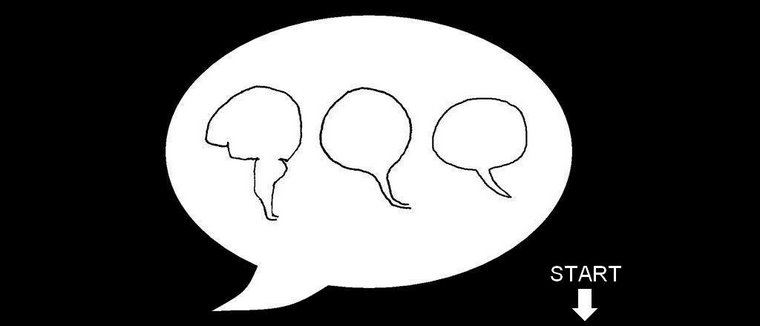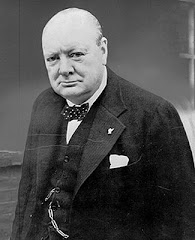is home to the greatest number of Brain Injury Clubhouses of any state in America. The Clubhouse is a user-led model first developed in mental health settings. The idea behind it is that people with difficulties of whatever kind should be put in the driving seat, supported to run their own programme of services with a view to getting along in their lives. Clubhouses, as far as I'm aware, typically place emphasis on their members conducting all the administrative, managerial and maintenance work along side paid staff. They deliberately keep staffing levels low, such that the staff have no choice but to rely on the membership to get things done. A start to understanding Clubhouses is to read the Standards laid out in the website of the International Brain Injury Clubhouse Alliance website (below). If you do that, you'll know just about as much as I do. There are no brain injury Clubhouses in Britain. I hope to visit three Clubhouses - in Charlottesville, Roanoke and Richmond. (More: www.braininjuryclubhouses.net/standards.aspx) A big question for me will be this: who do they include? At Headway we have no functional criteria. That is, we don't exclude anyone whatever their condition. This means we have people who are, for example, tetraplegic, or who have formed virtually no new conscious memories since thier injury (in some cases many years ago). The principles of Clubhousing seem to presuppose a fair level of capacity among membership - the capacity to choose workgroups for example. I'm excited to find out how it all works.
WINDERMERE, FL
is the base of Giveback Inc., a mentoring and training scheme that recruits people to learn and then pass on techniques for coping and succeeding in life after injury. I came across the programme while reading a paper by it's director, Larry Schutz, in the research journal Brain Injury (http://www.informaworld.com/smpp/content~content=a779661020). In correspondence, Larry has been extremely friendly. He'd also heard about Headway, which I took as a good sign. The Giveback website describes the organisation as having created a 'community' that provides opportunities for self-help and peer support in the absence of long term support from the health care system. It also talks about offering support to people who have never had any formal treatment or rehabilitation. One of the most impressive elements of the Giveback programme is the number of people with brain injuries that have been recruited as trainers and programme coordinators, the implication being that a graduation process is an inherent part of the plan. In some support programmes, participants with injuries are actually prevented from taking roles as volunteers or staff. At Headway East London we have people with injuries at all levels of the organisation, typically on a voluntary basis, but a major challenge for us is that of increasing the support we offer people in taking up formal jobs (either within or outside the organisation).
WASHINGTON, D.C.
is where I will (hopefully) meet Professor Edgar Kahn, inventor of Time Dollars and enthusiastic promoter of Timebanking. I saw Edgar speak at an event last year put on by the New Economics Foundation (http://www.neweconomics.org/gen/). People with disabilities or illnesses drop out of the competitive job market. And as they do so, they drop into a category of little or no political value - the category of 'economic burden'. They are viewed as people who must be carried, paid for, subsidised for the rest of their lives. Timebanking is a formalised barter system that allows people outside the mainstream work market, people who have little money and are often excluded from society, to exercise valuable skills, reclaim self-esteem and reconnect with the community. Sometimes timebanks use a hard currency (like bank notes), sometimes they just record people's contributions on a data base. By signing up local organisations (cafes, cinemas, schools...) you can plug in resources and rewards (free tickets in exchange for free cleaning, free coffees in exchange for free leafleting...). Everybody wins. That's the theory at least. Timebanks have existed for a while in the UK, and have been used for all sorts of clever purposes. In D.C. they run Youth Courts on a Timedollar system, where young people arrested for crimes are tried by courts run by their peers. But as far as I'm aware there are none that offer specific support for people with brain injuries to join in. We're trying to set one up at Headway. I want as many ideas as I can get about how these things work. (More: http://www.timebanks.org/).
NEW YORK, NY
is a big city like London. Just like London it's diverse and multicultural. It has rich people and poor people, healthy people and sick people. It's also full of cars, just like London (and where there are cars there are accidents). When I visit I will be wanting to learn how (and how well) this comparable city supports people who've had brain injuries. My starting point will be the Brain Injury Day Treatment Programme at the Rusk Institute of Rehabilitation Medicine (550 1st Avenue). The institute has a long standing reputation because it is run by one of the most respected experts in contemporary rehabilitation, Yehuda Ben-Yishay, who was influential in developing what's known as the Therapeutic Milieu approach. According to Ben-Yishay, this approach, like that of Giveback, can also be described in terms of creating a small 'community' of survivors - a tight-knit team who support each other through the process of rehabilitation. I know less about this programme directly than I do the others. Most of my knowledge is based on extrapolation from Ben-Yishay's writings and what I've learned from similar programmes in the UK (e.g. the Oliver Zangwill Centre in Cambridgeshire http://www.ozc.nhs.uk/). I'm lucky enough to have been invited by Dr Ellen Daniels-Zide to sit in for four days in June. I'm looking forward to seeing the Day Programme in action, and witnessing some of its widely-reputed (and replicated) practices.
ALBANY, NY
is a few hours north of NYC. It's the New York State Capital (for those of you, like me, who didn't know that already). It's also the base of the New York Neurobehavioural Resource Programme, a system funded by New York State to provide concrete, sustainable support in the long term for people with complex difficulties - in particular people with drug and alcohol dependency as well as brain injury. I met Mark Ylvisaker, one of the programme directors, last year when he visited HEL. He spent a day there talking about his work and seeing what we do. He also spent a weekend at my house, eating vigorously and providing wisdom and jokes in return for hospitality. I've read a good deal about Mark's work in the reasearch literature, and it resonates strongly with what we're doing at Headway. He and his colleagues have developed a number of inspiring devices and techniques for helping people with injuries overcome their problematic histories and start planning more hopeful futures. He also writes about the importance of acknowledging and working closely with people's existing motivations, the things they are proud of and that matter to them. My hope is to see how these principles are put into action. (More: http://www.bianys.org/learnet/index.html; http://www.scssconsulting.com/)
COLUMBUS, OH
is a little way west of New York. John Corrigan is the director of the Ohio Valley Centre for Brain Injury Prevention and Rehabilitation (OVC) (http://www.ohiovalley.org/) and also the co-author of the super-pragmatic Whatever It Takes (WIT) model of rehabilitation (http:www.ohiovalley.org/abuse/wit.html/). What I like most about the work of the OVC is their willingness to challenge the conventional wisdom that professional services are inherently the best solution. One of the key points of the WIT model is that state funding infrastructures often limit people's access to the right kind of help and that 'natural' supports (those present in the community) can often last longer and be more pertinent than those provided by professionals. In a 2003 paper (http://www.ncbi.nlm.nih.gov/pubmed/12601644/) John and his team also demonstrated the bias in the results of many out-come studies caused by the high rates of participant drop-out: the fact that such studies typically end up reporting on only the better long-term outcomes because the large number of people who do worse (those with drug or alcohol dependency, those with mental health problems) tend to disappear. This certainly echoes my own experience - many of the people we work with at Headway have been failed by the state-funded services and some are off the map entirely. The big challenge in London is creating and organising the communities that might provide the long-term 'natural' supports the WIT model talks about. Hopefully when I visit in June, some of the OVC's Frontier Spirit will rub off on me.
CHICAGO, IL
is where President Obama worked for many years as a Community Organiser. It's also the home of the West Side Health Authority (http://www.healthauthority.org/) - a community based health programme run by residents on a not-for-profit basis (I believe). Every Block a Village, the moto of the Authority, is said to be inspired by an African proverb - that it takes a village to raise a child. Based on this idea, the Health Authority have developed a network of block-based resources, capitalising on the will of community members to provide for each other. This, like the Youth Courts, is a visit based on the hope of finding new and innovative systems for generating community in urban settings. I haven't arranged it as yet, but if time permits, I will.












